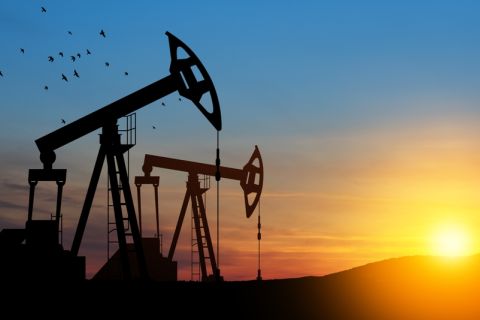Gathering infrastructure and transportation to take petroleum products to market is critical in any developing play. Colorado and Wyoming's Niobrara, an old play that has been renewed by technological advancements and favorable economics, is unlikely to host many major greenfield infrastructure projects, because there are existing facilities in the area. But some regional infrastructure will be needed.
Several pipelines traverse the Niobrara play, but only one is a major oil system. In the Denver-Julesburg Basin, SemGroup Inc.'s 526-mile, 12-inch-diameter White Cliffs pipeline provides about 30,000 barrels of oil take-away from the area into the oil hub at Cushing, Oklahoma. The pipeline is expandable to 50,000 barrels per day.
Producer price realizations with this pipeline have been estimated at a savings of $4 to $6 per barrel across the field (Anadarko Petroleum Corp. and Noble Energy Inc., both based in Houston, are major shippers on White Cliffs). Operators are also anticipating significant increased take-away capacity for condensates and natural gas liquids (NGLs). Despite recent additional capacity, robust development in the play will require at least 20,000 barrels per day of additional take-away capability to prevent bottlenecks in the next three years.
The Niobrara is not your typical shale play, and hence, economic specifications cannot be standardized and are yet to be fully understood. Nonetheless, the initial diagnosis of any horizontal well within the tested acreage predicts a healthy financial upside.
Long-term performance is essential to understanding and predicting the evolution of this complex, naturally fractured play. The regional learning curve to unlock shale oil will only get better, since most operators in the Niobrara have simultaneous operations in the nearby Bakken—another shale play with strikingly similar geological characteristics.
While there will undoubtedly be improvements in Niobrara operational efficiencies, economies of scale will be indispensable in operational optimization. Associated natural gas monetization will be just the icing on the cake for the major producers in the play, whose main focus is higher-margin liquids. Currently, the main barrier to entry for new producers is acreage acquisition, which, to some extent, can be surmounted by acquisitions and joint ventures. Once entry barriers are overcome, the outlook for economic feasibility should be positive.

Historically, there was a correlation between natural gas and oil prices. However, since early 2009, prices have moved independently, on paths that diverge.
Play economics
The Niobrara is no stranger to petroleum exploration and production. Shale rock with specific qualities related to this play can be found sporadically throughout several basins in the Rocky Mountain region, especially in northeastern Colorado, southeastern Wyoming, northwestern Kansas and southwestern Nebraska.
In the Piceance Basin, natural gas is the dominant resource exploited, whereas exploration and production activities are focused more on liquids and oil in the Greater Green River Basin, and even more so in the D-J Basin.
During the past three decades, hundreds of vertical wells have been drilled in these old basins and even through the Niobrara formation, which spans depths from 4,000 to a little over 10,000 feet. So, why all the buzz over this shale play? Because two key factors have helped make the play a household name in the industry: technology and economics.
The old process of drilling has become new again, thanks to a combination of horizontal drilling and enhanced stimulation techniques (multistage fracing) at affordable costs. Also, the solidity and gradual elevation of oil prices relative to natural gas prices (20-to-1 at press time) have created an inadvertent shift and renewed focus on shale-oil development. Consequently, among geological laymen, the Niobrara shale play is no longer associated with natural gas, but rather is perceived as an oil play.
Corporate strategic shifts to focus on oil in the Niobrara by companies that have historically exploited natural gas are due to the disappointing outlook for natural gas prices; and confidence that oil prices will stay above minimum levels for individual project-finance viability, providing an overwhelmingly better return than natural gas.
Natural gas commodity prices in North America are principally regional with little influence from outside factors, while oil-price fundamentals are heavily influenced by global supply and demand. A return to $30 per barrel, as seen in the early 2000s, is almost unimaginable without stunningly derailing developments on the economic and technological fronts. However, industry experts do not question the possible recurrence of $3- to $4 per million Btu (MMBtu) for natural gas, and even go a step further by predicting similar price levels in the near to medium term.
Hart Energy's Pricing Center is confident that the price of oil, benchmarked to West Texas Intermediate (WTI), will remain high by historical standards in the medium term and should continue to trend higher, testing the $100 marker occasionally. Natural gas prices are forecast to be capped around $5 through 2013, averaging a little over $4.50 during this time frame.
On an MMBtu basis, the oil to gas differential of over $10 that was seen only when WTI prices hit $124 per barrel could easily reoccur. This time, the wide differential wouldn't be mainly due to a spike in oil prices but rather to the sustained depression in natural gas prices—a phenomenon making it economic for producers to acquire acreage and invest heavily in the oily portion of the Niobrara.

Despite steeper declines, a tenfold increase in horizontal over vertical well production proves the efficacy of revolutionary stimulation techniques associated with horizontal drilling and more than justifies the extra capital outlay.
Operations
Even though acreage acquisition may be considered a sunk cost in oil and gas project finance, a first-mover advantage when owning land in a hot new shale play before the rush begins can drastically reduce a company's overall investment and free up money for other E&P activities. Most companies with expansive land positions have an approximate acreage cost of around $300 to $400. An acre in the Niobrara region could draw about $50, before the play's potential was made public in early 2010. Now, deals have reported land costs of almost $5,000 per acre, a huge upfront investment for any latecomer looking to get into the play.
Also, drilling costs vary throughout the play, according to the depth drilled and the number of frac stages required for an optimal initial production (IP) rate. For example, the Niobrara's formation depth within Wattenberg Field of the D-J Basin is about 7,000 feet, whereas it can measure as deep as 12,000 feet in Silo Field. This non-uniformity also affects well economics, due to the varying liquids-gas production mix. For example, the play gets oilier and less gassy as one transitions from Wattenberg Field to Silo Field.
Although most wells are in the experimental stage, companies have been averaging 16 frac stages with horizontal laterals between 4,000 and 5,000 feet. However, this may not remain the norm through time, as the play's geological intricacies are better understood.
Compared to other shale plays, such as the Haynesville and Eagle Ford, where overall well costs can be on the order of $7 million and $5.5 million, respectively, horizontal well expenditures in the Niobrara are much more economical at roughly $3.5 million, depending on the extent of completion services contracted. Vertical wells in the area cost about 75% less. Even though pressure-pumping capacity is expected to be tight in the region this year, well costs are not expected to inflate to a level that will affect scheduled project finances.
Reported IP rates for horizontal wells have been impressive, although results have varied widely. The highest rate reported was from EOG Resources Inc.'s famed Jake 2-01H, which flowed a maximum unrestricted rate of 1,558 barrels of oil per day. On average, wells are expected to average around 800 barrels daily in the D-J Basin. Estimated ultimate recoveries (EURs) for horizontal wells are anticipated to be in the range of 300,000 to 400,000 barrels equivalent, depending on field characteristics, with less gas production than traditional vertical wells.
For example, Wattenberg Field vertical wells typically have an ultimate recovery of 40,000 barrels, with about 60% natural gas. Despite steeper declines the tenfold increase in production from horizontal drilling proves the efficacy of revolutionary stimulation techniques and more than justifies the extra capital outlay. Recovery results are based on 320-acre spacing. Existing vertical wells within the play will affect future downspacing and could further influence horizontal decline rates.
Because only a few horizontal wells have been drilled and most producers in the play are in the exploratory phase (not to mention attempting to solve the geologically convoluted nature of the formation), it is impossible to establish a standard type curve. Although the horizontal-well IP rates are far superior to those of vertical wells, it is not yet fully understood how fast they will decline. While most predict a gentle slope, others are a little less optimistic.
For example,Carrizo Oil & Gas Inc. anticipates an IP rate of 600 barrels of oil per day with a gradual decline to about 80 barrels per day in 24 months. Elsewhere, Rex Energy Corp.'s Silo Field type curve has an IP rate of 400 barrels per day with a 24-month decline to around 80 barrels.
Recommended Reading
What's Affecting Oil Prices This Week? (Oct. 21, 2024)
2024-10-21 - Currently, Stratas Advisors are forecasting that oil demand will increase by 1.20 MMbbl/d in 2024. Earlier this year, OPEC was forecasting 2.25 MMbbl/d of oil demand growth.
OPEC Cuts 2024, 2025 Global Oil Demand Growth View Again
2024-10-14 - The weaker outlook highlights the dilemma faced by OPEC+, which is planning to start raising output in December after earlier delaying the hike against a backdrop of falling prices.
OPEC Outlook: US Shale Oil Volumes to Hit 16.7 MMbbl/d by 2030
2024-11-07 - The head of OPEC’s energy studies warned that failure to invest in oil production could lead to a global energy crisis as early as 2035.
As Crude Markets Turn Bearish, Will OPEC Come to the Rescue?
2024-09-13 - Despite oil futures prices sliding since August, OPEC continues to keep supplies up, to the bafflement of analysts.
What's Affecting Oil Prices This Week? (Aug. 26, 2024)
2024-08-26 - For the upcoming week, Stratas Advisors expects that oil prices will move upwards but that the price of Brent crude will not break through $82 without some additional geopolitical disruption.
Comments
Add new comment
This conversation is moderated according to Hart Energy community rules. Please read the rules before joining the discussion. If you’re experiencing any technical problems, please contact our customer care team.




